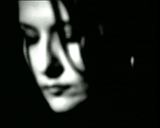
 Author of all texts
about mythology on
these web-pages is
Lidija Bajuk:
Author of all texts
about mythology on
these web-pages is
Lidija Bajuk:
|
lidija.bajuk@posluh.hr
scena.hgu.hr/lidija-bajuk/
- The Sky
- The Mountain
2. PERUNIKA
- Leluya
- Ball lightning
3. AQUARIUS
- Candlemen
WATER MAID
- Fairies
- Witches
4. DRAGON
- Water
SNAKE
- Bogorodica
(Rainbow)
5. GREEN GEORGE
- The Moon
- Corn Spirit
6. LEPA MARA
- Hair
- Embroidery
7. GRABANCIJAŠ
- Light
8. PESJANEK
- Forest
9. LITTLE RED HAT
(DWARF)
- The Cap, Little Hat
10. STRAHE & MRAKI
(GIANTS)
|
PERUN
|
|
On the feast day of St. James, people in Medimurje say: "James burns, Jana glows hot" ("Jakov kuri, Jana žari"). On the feast day of St. Peter and St. Paul (Jun 29), it is not allowed to climb a tree or grind a scythe because something bloody could happen. There is also a belief that people should not drive carts and should not work with grass and grain on the feast day of St. Elijah because St. Elijah could kill people and cattle. In Bosnia, there is a custom on the day before the feast of St. Elijah when people, wearing nice festive clothes, go to some mountain and then with a roast and bonfire wait for the Sun to rise. This is a remnant of the ancient cult of Perun (it reached its peak in the 9th and 10th century), which had its shrines in the oak forests or, at least, a stony altar under an oak tree (made of 8 small and one big altar places, which ground-plans were used for building the first Christian churches). Participants in a ceremony would pray at that place, make deals and truces, judge conflicts, bring thanksgiving sacrifices, make bonfires, sing and dance to the Perun's honor, all that in hope that Perun will be merciful and protect them from everything evil. The followers of Perun were giving an oath by stones, weapons, and his name. That is why he is a god of peace, justice, and victory. In addition to an oak tree, the flower perunika, iris, sabljarka, bogiša (bogisha, this name originates from the region around Dubrovnik town, on the Adriatic coast of southern Croatia), is dedicated to Perun. In Medimurje, one greeting used on the feast day of St. Stephen (Dec. 26) mentions God with lelulja (ljeljuja), i.e. perunika, in his hand. According to a legend, this flower grows at the place where Perun's spark hit a fertile soil. Hazelnuts and walnuts are also his sacred plants, and a bull and a male goat his sacred animals. Today, his name is preserved in the toponyms Perun Planina (Perun Mountain near Poljice), Perun, Peruncevac, and Perunac in Istria peninsula, Perun, Perunic, and Perunsko on the Mosor mountain. It is also preserved in the localisms of fork, (vilica in Croatian) a part of cutlery, since it resembles a trident: for example, perun or pinjur in Dalmatia (southern Adriatic coast of Croatia), and pirun in Istria (peninsula on the northern Adriatic coast). Perun is identical to the old Indian god Parjanya (Indra), Celtic Taranis, (Gothic Fairguns), Prussian Perkuno, Scandinavian Thor (also known as Tura among the Slavs), Greek Zeus, Roman Jupiter. However, his face will turn black and ugly in anger if people turn against him, or if they neglect honoring ancestors (or exaggerate in that), or neglect mutual respect, fairness, and truthfulness, or if they break an oath. Especially in cases of disrespect for parents, dispute among brothers, forcing a woman to sexual intercourse, giving an untrue testimony, disclosing a secret, breaking a promise, or being unfaithful to your partner in marriage. Then he will turn his powers against the human in order to warn or punish him/her (in Medimruje people say "The God is angry" - "Božek se kara" - for thunder). Perun, helped by Perunika, "loads" the thunderbolts and shoots them at such people. He is using thunders (which are actually his angry voice) and storms to ruin the crop, to create diseases, poverty, and hunger, and to kill livestock and people. However, this would not be the final death, but rather spiritual purification. In such a situation, Perun can be transformed into the god of war. In the most drastic cases of sins, he would turn weapons against the people who carry them. Perun's female companion punishes by the "white plague" (sterility). . Under the people's fear of Perun's and Perunika's revenge, and also under the influence of the new religion, the human imagination has transformed this divine couple into its reverse side: horrible monsters, e.g. a dragon and snake, some of them becoming separate mythical creatures. Their heavenly thunders then become underground rumblings, i.e. earthquakes. From these examples, we can see that the thunder has a double role (depicted by a trident): (weapon of) creation and (weapon of) destruction. The fire in a thunder releases heavenly waters, so it fertilizes, while the dragon's fire brings destruction by droughts. A place hit by lightning was considered sacred and objects, like a stone or tree, from such a place were consecrated. A bell symbolizes the tamed power of thunder. ). Another incarnation of Perunika is a woodpecker, a bird that announces an upcoming storm. |